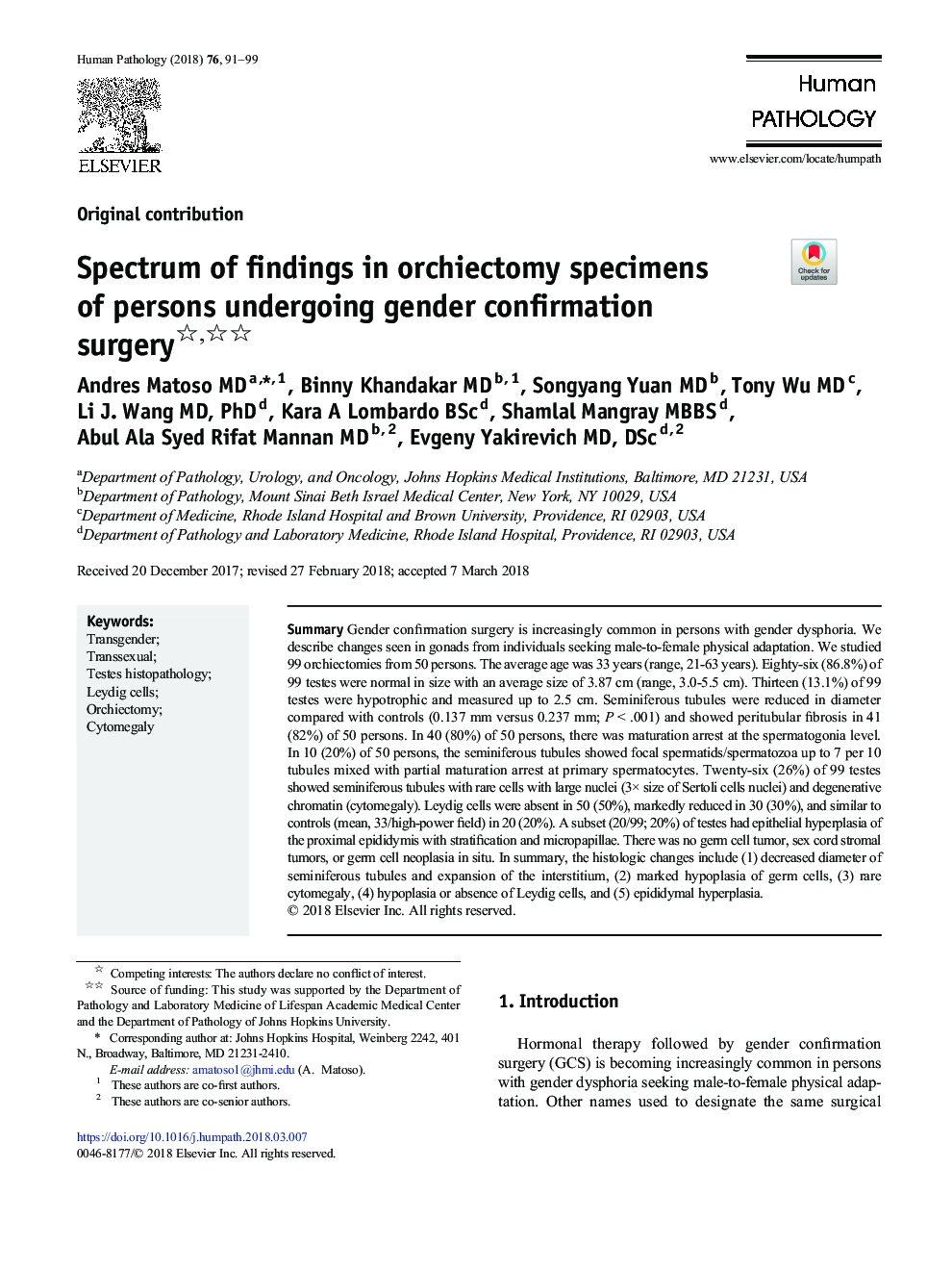| Article ID | Journal | Published Year | Pages | File Type |
|---|---|---|---|---|
| 8807530 | Human Pathology | 2018 | 9 Pages |
Abstract
Gender confirmation surgery is increasingly common in persons with gender dysphoria. We describe changes seen in gonads from individuals seeking male-to-female physical adaptation. We studied 99 orchiectomies from 50 persons. The average age was 33 years (range, 21-63 years). Eighty-six (86.8%) of 99 testes were normal in size with an average size of 3.87 cm (range, 3.0-5.5 cm). Thirteen (13.1%) of 99 testes were hypotrophic and measured up to 2.5 cm. Seminiferous tubules were reduced in diameter compared with controls (0.137 mm versus 0.237 mm; P < .001) and showed peritubular fibrosis in 41 (82%) of 50 persons. In 40 (80%) of 50 persons, there was maturation arrest at the spermatogonia level. In 10 (20%) of 50 persons, the seminiferous tubules showed focal spermatids/spermatozoa up to 7 per 10 tubules mixed with partial maturation arrest at primary spermatocytes. Twenty-six (26%) of 99 testes showed seminiferous tubules with rare cells with large nuclei (3Ã size of Sertoli cells nuclei) and degenerative chromatin (cytomegaly). Leydig cells were absent in 50 (50%), markedly reduced in 30 (30%), and similar to controls (mean, 33/high-power field) in 20 (20%). A subset (20/99; 20%) of testes had epithelial hyperplasia of the proximal epididymis with stratification and micropapillae. There was no germ cell tumor, sex cord stromal tumors, or germ cell neoplasia in situ. In summary, the histologic changes include (1) decreased diameter of seminiferous tubules and expansion of the interstitium, (2) marked hypoplasia of germ cells, (3) rare cytomegaly, (4) hypoplasia or absence of Leydig cells, and (5) epididymal hyperplasia.
Related Topics
Health Sciences
Medicine and Dentistry
Pathology and Medical Technology
Authors
Andres MD, Binny MD, Songyang MD, Tony MD, Li J. MD, PhD, Kara A BSc, Shamlal MBBS, Abul Ala Syed Rifat MD, Evgeny MD, DSc,
